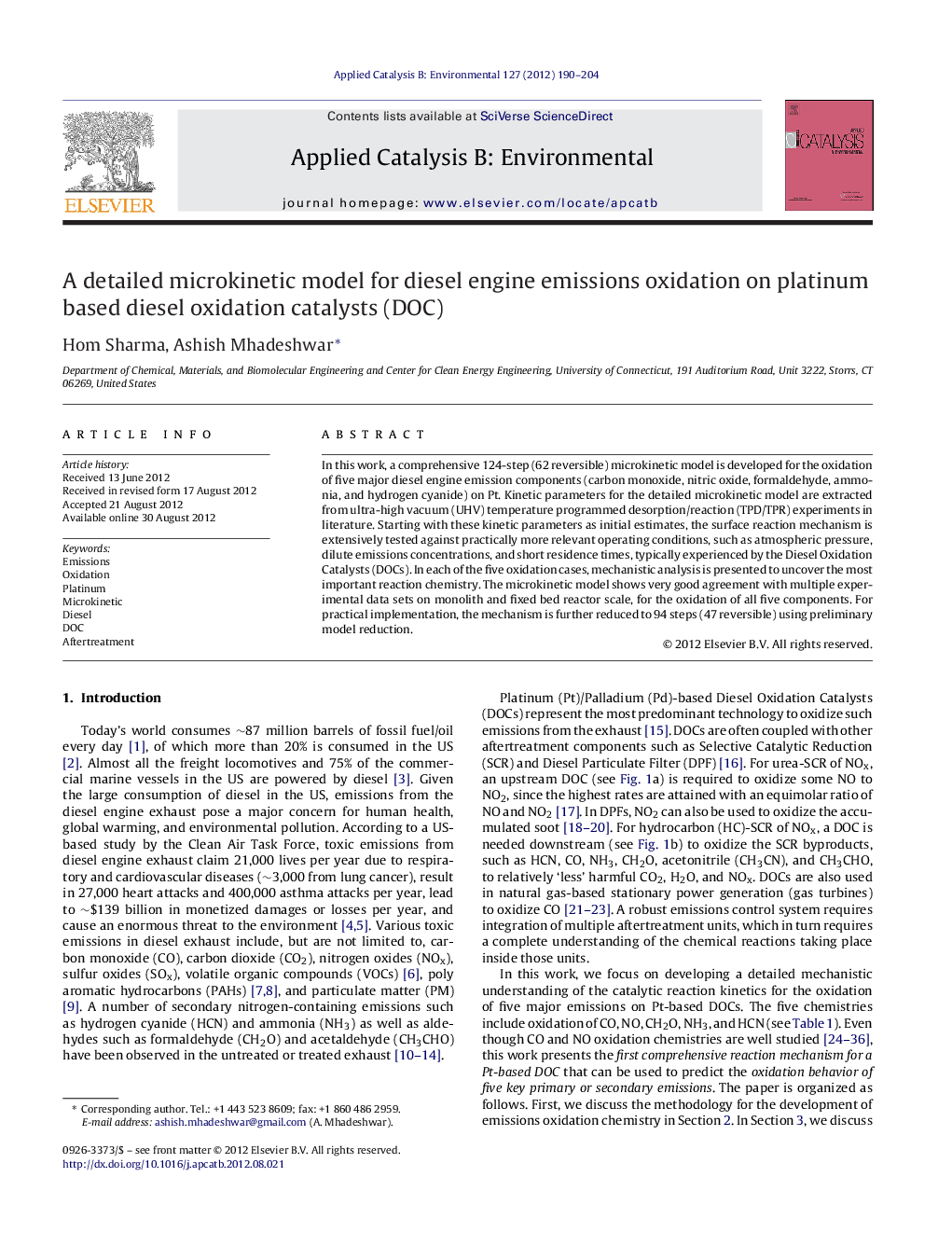| Article ID | Journal | Published Year | Pages | File Type |
|---|---|---|---|---|
| 46277 | Applied Catalysis B: Environmental | 2012 | 15 Pages |
In this work, a comprehensive 124-step (62 reversible) microkinetic model is developed for the oxidation of five major diesel engine emission components (carbon monoxide, nitric oxide, formaldehyde, ammonia, and hydrogen cyanide) on Pt. Kinetic parameters for the detailed microkinetic model are extracted from ultra-high vacuum (UHV) temperature programmed desorption/reaction (TPD/TPR) experiments in literature. Starting with these kinetic parameters as initial estimates, the surface reaction mechanism is extensively tested against practically more relevant operating conditions, such as atmospheric pressure, dilute emissions concentrations, and short residence times, typically experienced by the Diesel Oxidation Catalysts (DOCs). In each of the five oxidation cases, mechanistic analysis is presented to uncover the most important reaction chemistry. The microkinetic model shows very good agreement with multiple experimental data sets on monolith and fixed bed reactor scale, for the oxidation of all five components. For practical implementation, the mechanism is further reduced to 94 steps (47 reversible) using preliminary model reduction.
Graphical abstractFigure optionsDownload full-size imageDownload as PowerPoint slideHighlights► A microkinetic model is developed for diesel engine emissions oxidation on Pt. ► Kinetic parameters are estimated from temperature programmed experiments in literature. ► The mechanism is validated and analyzed against experimental data at practically more relevant conditions.
